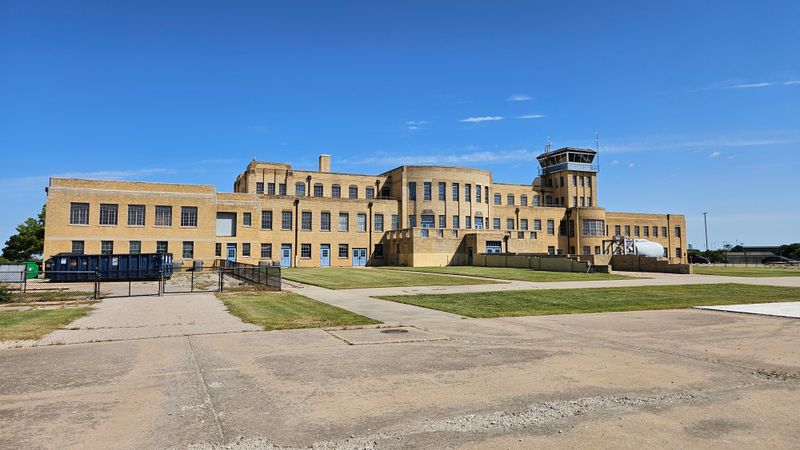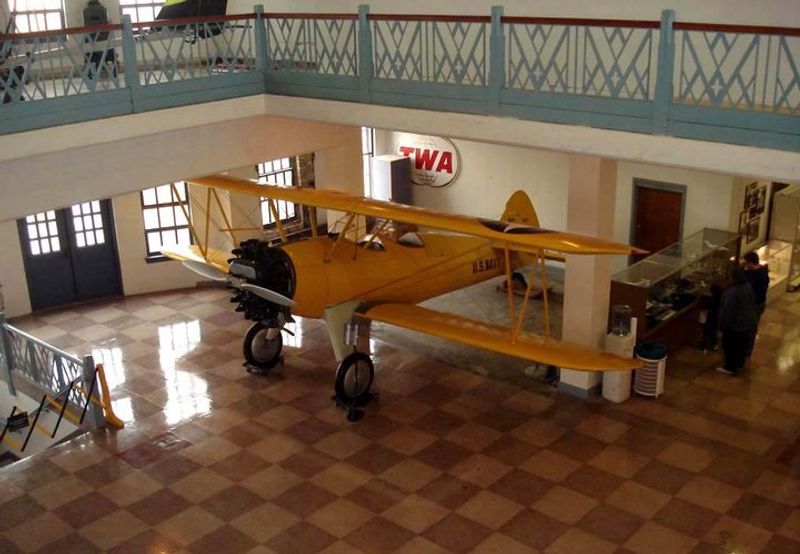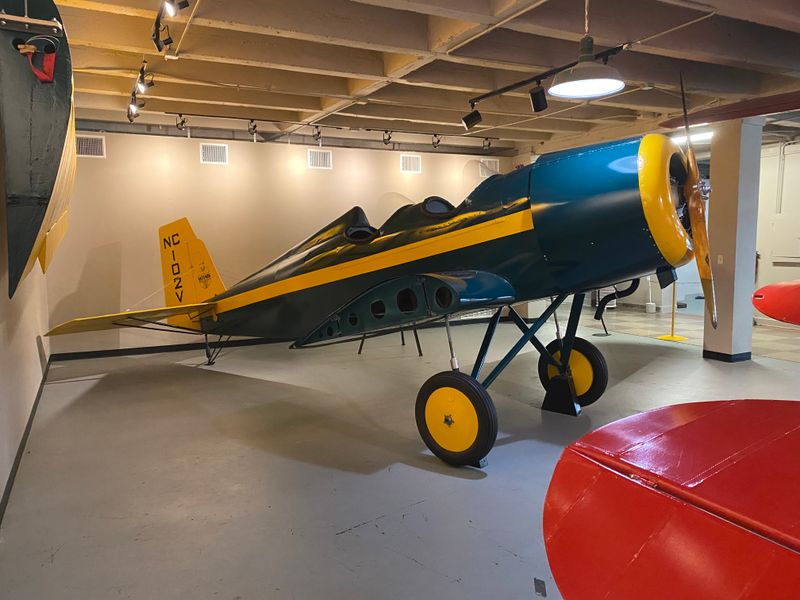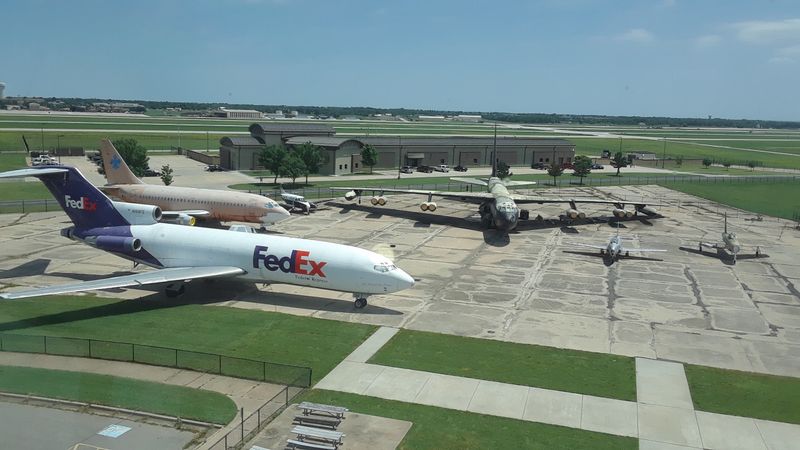In Wichita’s storied Art Deco terminal, aviation history doesn’t just sit behind glass – it roars to life. The Kansas Aviation Museum feels intimate, yet its collection and archives rival institutions many times its size. From legendary bombers to futuristic prototypes, you’ll step into cockpits, climb a control tower, and meet the innovators who made Wichita the Air Capital of the World. Ready to discover how a “tiny” museum became a giant of flight?-
1. Art Deco Terminal: A Time Capsule of Flight
Step into the 1943 Wichita Municipal Airport Terminal, an Art Deco treasure where aviation legends once walked. Listed on the National Register of Historic Places, the building’s terrazzo floors, streamlined geometry, and sunlit atrium transport you to aviation’s golden era. Interpretive panels spotlight visits by Charles Lindbergh and Amelia Earhart, weaving personal stories into grand history. The terminal’s adaptive reuse is a lesson in preservation: original ticket counters, period signage, and restored fixtures frame immersive exhibits. Every echoing hallway whispers takeoff tales, making the building itself the museum’s crown jewel and a breathtaking stage for Kansas’s century of innovation in flight.
2. Control Tower Views Over the Air Capital
Climb the museum’s historic control tower for panoramic views of Wichita’s skyline, McConnell Air Force Base traffic, and aircraft taxiing nearby. Period communications equipment and interpretive displays reveal how controllers orchestrated mid-century air travel. Listen to live radio chatter when conditions allow, an electrifying bridge between past and present. From this vantage, Wichita’s identity as the Air Capital of the World takes shape – factories, runways, and skyways converge. Families love the photo ops; enthusiasts savor the operational context. It’s a visceral reminder that aviation is not only displayed here – it’s happening in real time, just beyond the glass.
3. Giants of the Ramp: B-52D, KC-135E, and More
Outside, monumental aircraft line the ramp, including a Boeing B-52D Stratofortress and a KC-135E Stratotanker – Cold War icons that shaped global airpower. Interpretive signage pairs technical specs with human stories, from crew rituals to maintenance feats. Walk right up for scale and detail; rivets, landing gear, and bomb bays become tangible lessons. The lineup rotates with restoration progress, ensuring repeat visits reveal new angles. Staff and volunteers often share insider anecdotes, connecting engineering to operations. Standing beneath a Stratofortress wing, you grasp the museum’s paradox: compact indoors, colossal outdoors – a juxtaposition that makes the collection feel both intimate and epic.
4. Beech Starship: Futuristic Roots in Wichita
The composite marvel Beech Starship gleams like tomorrow parked in yesterday’s terminal. Designed with canards, pusher propellers, and extensive carbon fiber, it showcases Wichita’s audacity to reimagine business aviation. Exhibits unpack the Starship’s bold engineering, certification hurdles, and cult following among pilots. Standing inches from its sculpted surfaces, you appreciate how advanced manufacturing and ambition converged in Kansas. It’s a conversation starter about risk, innovation, and why some breakthroughs fly further in legend than in sales. For designers and dreamers, the Starship proves that form and function can be equally daring – and unforgettable.
5. Hands-On Galleries: Cockpits, Simulators, and Play
Here, learning is kinetic. Kids slide, build, and puzzle through aviation concepts while teens test flight simulators calibrated for realism. Adults can step into real cockpits, toggling switches that once guided pilots through storm and starlight. Docents translate complex systems – pitot tubes, control surfaces, turbine stages – into vivid stories. Interactive displays encourage curiosity across generations. Families linger because the museum balances play with depth, turning STEM into an adventure. Reviewers rave about value and staff warmth. You’ll leave with sore cheeks from smiling and a head full of lift equations, radio chatter, and that first-takeoff flutter in your stomach.
6. Archives and Artifacts: 200,000 Windows to History
Beyond the aircraft, the museum safeguards roughly 200,000 photographs, documents, blueprints, and ephemera. This deep archive maps Kansas’s manufacturing might – Beech, Cessna, Boeing – and the people behind the planes. Researchers find treasures: test-flight logs, wind-tunnel snapshots, factory floor panoramas. Curated displays rotate rare pieces to the public, from pilot wings to engine cutaways. The sheer volume turns a “small” museum into a scholarly heavyweight. Exhibits reveal how Wichita’s supply chains, schools, and airfields knit together. It’s not just airplanes; it’s an ecosystem documented in ink, film, and grease-stained notebooks, preserving the state’s aerospace DNA for the next generation.
7. Kansas Aviation Hall of Fame and New Exhibits
The Kansas Aviation Hall of Fame celebrates innovators whose ideas took wing from prairie to stratosphere. Recent fundraising fueled a new theater and expanded exhibits, spotlighting designers, pilots, and production heroes. Engaging media blends oral histories with immersive visuals, making achievements feel immediate and personal. You’ll meet household names and unsung linchpins who kept assembly lines humming. The gallery elevates local pride into national significance, arguing persuasively that aviation’s future still runs through Wichita. Whether you’re scouting role models or industry lineage, this space distills a century of grit and genius into inspiring, concise storytelling.
8. Plan Your Visit: Hours, Tips, and Tower Time
The museum is open daily except Thursday, with family-friendly hours and ample time to explore inside and out. Aim for clear days to maximize control tower views and outdoor aircraft access. Staff are famously welcoming – ask about cockpit entry guidelines and simulator availability. Budget extra time for the gift shop’s aviation books and STEM kits. Parking is easy, and the location near McConnell AFB adds live-air traffic drama. Check the website for special events, restoration updates, and holiday hours. With thoughtful pacing, you’ll absorb more than you expect – and still want to come back for the parts you missed.












